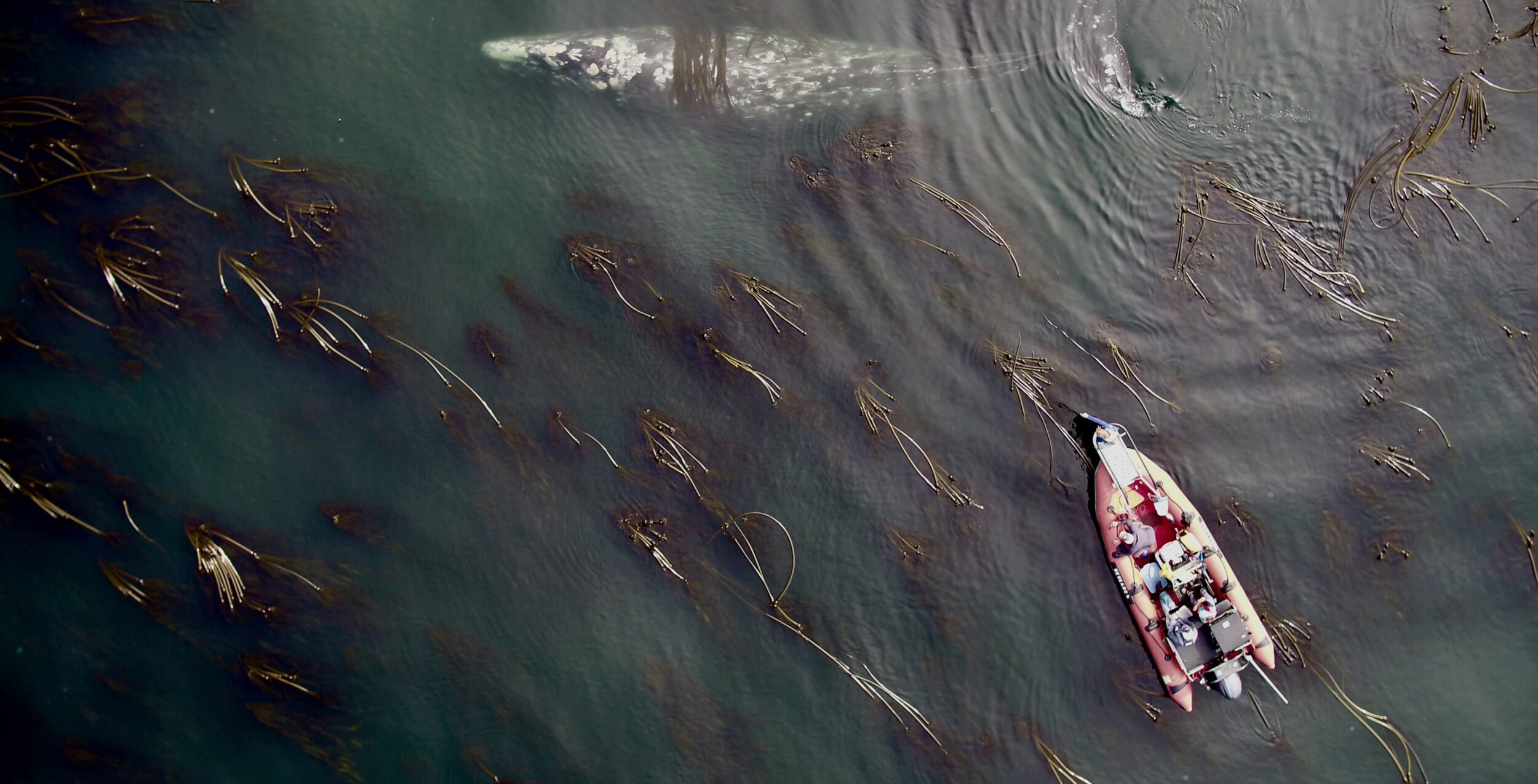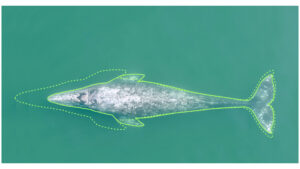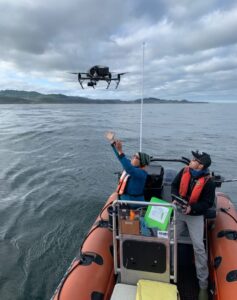
By MOLLY ROSBACH/OSU News Service
Gray whales that spend their summers feeding in the shallow waters off the Pacific Northwest coast have undergone a significant decline in body length since around the year 2000, a new Oregon State University study found.
The smaller size could have major consequences for the health and reproductive success of the affected whales, and also raises alarms about the state of the food web in which they coexist, researchers say.
“This could be an early warning sign that the abundance of this population is starting to decline, or is not healthy,” said K.C. Bierlich, co-author on the study and an assistant professor at OSU’s Marine Mammal Institute in Newport. “And whales are considered ecosystem sentinels, so if the whale population isn’t doing well, that might say a lot about the environment itself.”
The study, published in Global Change Biology, looked at the Pacific Coast Feeding Group, a small subset of about 200 gray whales within the larger Eastern North Pacific population of around 14,500. This subgroup stays closer to shore along the Oregon coast, feeding in shallower, warmer waters than the Arctic seas where the bulk of the gray whale population spends most of the year.

Recent studies from OSU have shown that whales in this subgroup are smaller and in overall worse body condition than their north Pacific counterparts. The current study reveals that they’ve been getting smaller in recent decades.
The Marine Mammal Institute’s Geospatial Ecology of Marine Megafauna Lab has been studying this subgroup of gray whales since 2016, including flying drones over the whales to measure their size. Using images from 2016-2022 of 130 individual whales with known or estimated age, researchers determined that a full-grown gray whale born in 2020 is expected to reach an adult body length that is about 5 feet, 5 inches shorter than a gray whale born prior to 2000. For Pacific Coast Feeding Group gray whales that grow to be 38-41 feet long at full maturity, that accounts for a loss of more than 13 percent of their total length.
If the same trend were to happen in humans, that would be like the height of the average American woman shrinking from 5 feet, 4 inches to 4 feet, 8 inches tall over the course of 20 years.
“In general, size is critical for animals,” said Enrico Pirotta, lead author on the study and a researcher at the University of St. Andrews in Scotland. “It affects their behavior, their physiology, their life history, and it has cascading effects for the animals and for the community they’re a part of.”
Whale calves that are smaller at weaning age may be unable to cope with the uncertainty that comes with being newly independent, which can affect survival rates, Pirotta said.
For adult gray whales, one of the biggest concerns is reproductive success.

“With them being smaller, there are questions of how effectively these PCFG gray whales can store and allocate energy toward growing and maintaining their health. Importantly, are they able to put enough energy toward reproduction and keep the population growing?” Bierlich said.
Scarring on Pacific Coast Feeding Group whales from boat strikes and fishing gear entanglement also makes the team concerned that smaller body size with lower energy reserves may make the whales less resilient to injuries.
The study also examined the patterns of the ocean environment that likely regulate food availability for these gray whales off the Pacific coast by tracking cycles of “upwelling” and “relaxation” in the ocean. Upwelling sweeps nutrients from deeper to shallower regions, while relaxation periods then allow those nutrients to remain in shallower areas where light allows for growth of plankton and other tiny organisms, including the prey of gray whales.
“Without a balance between upwelling and relaxation, the ecosystem may not be able to produce enough prey to support the large size of these gray whales,” said co-author Leigh Torres, associate professor and director of the GEMM Lab at OSU.
The data show that whale size declined concurrently with changes in the balance between upwelling and relaxation, Pirotta said.
“We haven’t looked specifically at how climate change is affecting these patterns, but in general we know that climate change is affecting the oceanography of the Northeast Pacific through changes in wind patterns and water temperature,” he said. “And these factors and others affect the dynamics of upwelling and relaxation in the area.”
Now that they know the Pacific Coast Feeding Group whales’ body size is declining, researchers say they have a lot of new questions about future consequences of that decline and the factors that could be contributing to it.
“We’re heading into our ninth field season studying this PCFG subgroup,” Bierlich said. “This is a powerful dataset that allows us to detect changes in body condition each year, so now we’re examining the environmental drivers of those changes.”



I knew this article would sooner or later lay the blame on climate change even though Pirotta, the lead author admitted they haven’t studied whether climate change has an effect.
It makes perfect sense that climate change is playing a role. If the balance between upwelling and relaxation is affecting their food supply, that’s likely making them smaller. And there is abundant evidence that climate warming has altered ocean circulation patterns in many many ways. They’ll figure out the connection here sooner or later.